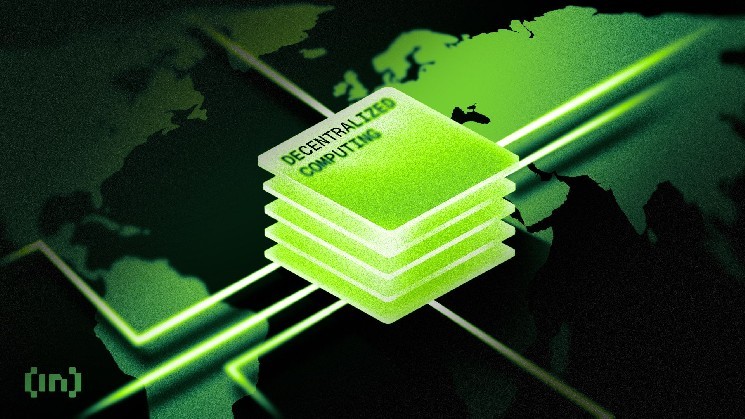
A recent outage at Amazon Web Services (AWS) froze thousands of applications and reignited debate about web3’s reliance on centralized cloud providers. The disruption exposed how deeply crypto platforms still depend on Web2 infrastructure for systems meant to operate without interruption. How a Centralized Outage Crippled Decentralized Systems On October 20, 2025, the AWS US-EAST-1 region went dark for nearly three hours due to a DNS bug in its DynamoDB service, freezing thousands of applications worldwide. The outage, which began around 07:55 UTC and was resolved by 09:35 UTC, stemmed from a latent software defect that created an empty DNS record, requiring manual intervention to fix. The AWS outage triggered a chain reaction, disrupting major tech platforms like Lyft, Peloton, and Roblox. The crypto and web3 industry also experienced widespread disruption. Coinbase Advanced, a key trading platform, halted operations entirely, leaving users locked out of their accounts and unable to execute trades. Base, Coinbase’s Ethereum Layer-2 blockchain, experienced severe slowdowns, with transaction throughput dropping dramatically as AWS-hosted infrastructure failed. Other ecosystems weren’t spared: Solana saw intermittent node failures, Ethereum’s decentralized apps (dApps) faced API disruptions, and Polygon reported partial outages in its scaling solutions. This event called into question the fundamental promise of blockchains to create applications that can operate continuously without relying on any single server, company, or government. The failure revealed how single points of failure continue to compromise web3’s vision of unstoppable applications. “The recent AWS outage is a reminder that web3’s promise of decentralization can’t rely on centralized backbones. Every outage like AWS’s shows the cost of centralization, not just in downtime but in trust,” said Evgeny Ponomarev, co-founder of Fluence. Decentralized Compute Shows Promise Amid Technical Hurdles Decentralized Physical Infrastructure Networks (DePIN) introduces a new model for provisioning compute resources. Instead of depending on centralized data centers, DePIN connects a global pool of independent providers through a peer-to-peer marketplace. Each server contributes compute, storage, or GPU capacity that is verified on-chain for transparency. Control is distributed, not owned, and the system scales organically as new participants join. This structure replaces massive, single-region data centers with a distribution across thousands of independent servers. If one fails, the workload can be seamlessly migrated to other servers or data centers. This distributed model also drives a significant cost advantage. By tapping into idle global compute capacity, DePIN providers achieve greater efficiency, often reporting costs that are up to 85% lower compared with major hyperscalers. For instance, Fluence is one of several projects developing decentralized compute networks under the DePIN model. The platform connects verified target="_blank" rel="noreferrer noopener">2025 State of Crypto report, the World Economic Forum projects the DePIN category will grow to $3.5 trillion by 2028. While DePIN cannot yet match the immediate global scale of a hyperscaler, its open source foundations make it far more adaptable. By building on open standards, workloads can move across multiple providers with minimal friction. Developers gain real portability instead of being locked into a single vendor’s API or billing model. In practice, decentralized networks like Fluence are already showing how open source infrastructure can connect independent providers into one interoperable fabric that behaves like a cloud, yet remains fully portable and transparent. Evgeny explained: “The goal is not to replace AWS overnight but to make migration simple and choice real,” said Evgeny Ponomarev, co-founder of Fluence. “When compute runs on open protocols across many providers, outages stop being systemic failures. They become local events the network can absorb” This open, cross-provider cloud model offers a path toward resilience that centralized architectures cannot match. As DePIN matures, it may redefine the baseline for reliability by making the cloud itself open source and the act of migration as simple as redeploying code. The post What the AWS Outage Revealed — and Why Projects Like Fluence Are Rebuilding Cloud Infrastructure for Web3 appeared first on BeInCrypto.
Wolf of All Streets Asks What Utility Does XRP Have After Western Union Snub
27 min ago
Put Your VET to Work — and Earn Boosted VTHO With VeChain’s NFT Staking
27 min ago
Analysts Warn of Potential XRP Price Crash Toward $2 as Market Sinks
28 min ago
Major Development for Ethereum (ETH): Ethereum Foundation Paves the Way for Wall Street with Its Latest Move!
28 min ago
Ethereum price under pressure, failure to reclaim $4,200 raises bearish risk
29 min ago
Berkshire Hathaway’s Death Cross Moment — What It Tells Crypto Investors
29 min ago